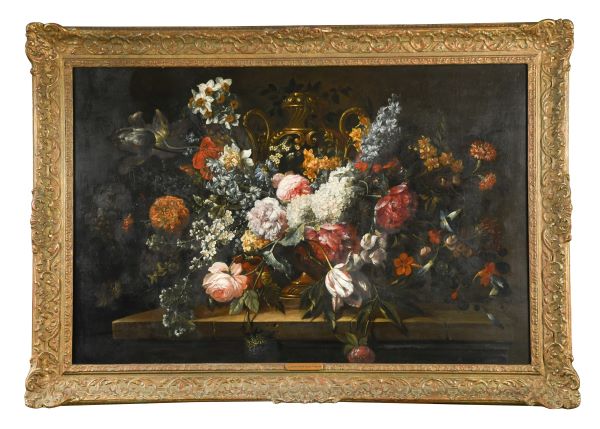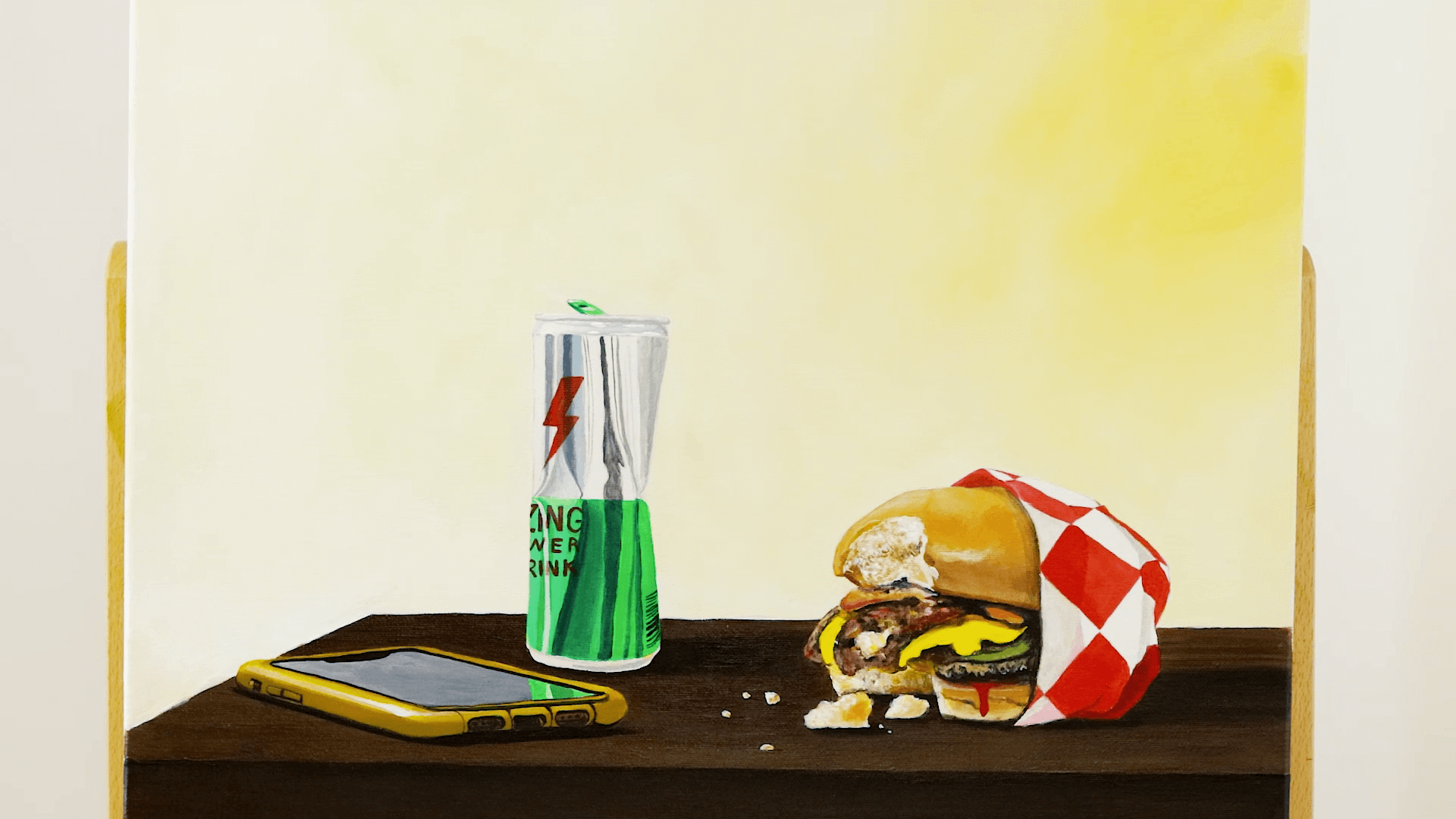The Enduring Appeal of the Still Life: A Reflection of Culture and the Human Condition

Still life painting, an art form dedicated to the depiction of inanimate objects arranged in a deliberate composition, has captivated audiences for centuries. More than just a display of technical skill, the still life offers a profound reflection of cultural values, social hierarchies, and the fleeting nature of life itself. From the opulent displays of Dutch Golden Age banquets to the minimalist arrangements of modern artists, the still life continues to evolve, proving its enduring relevance in the world of art.
The roots of still life can be traced back to ancient civilizations. Decorative motifs featuring flowers, fruits, and everyday objects adorned the walls of Egyptian tombs and Roman villas. These early examples, however, served primarily as embellishments within larger narratives, lacking the independent focus that defines the genre. True still life emerged gradually during the Renaissance, initially appearing as secondary elements in religious paintings. Artists like Leonardo da Vinci meticulously rendered flowers and fruits, demonstrating their mastery of observation and detail.
The 17th century witnessed the definitive birth of the still life as a distinct and highly valued genre, particularly in the Netherlands. The Dutch Golden Age, fueled by burgeoning trade and a newly wealthy merchant class, created a fertile ground for artistic innovation. As patronage shifted from the church and aristocracy to the bourgeoisie, artists began to cater to the tastes of their new clientele. The still life, with its accessible subject matter and opportunities for showcasing wealth and status, proved immensely popular.
Dutch still life paintings of this era are often categorized into distinct subgenres, each with its own symbolic language and thematic focus. Pronkstilleven, or "ostentatious still life," showcased luxurious objects such as silver goblets, imported fruits, and exotic textiles, reflecting the prosperity and global reach of Dutch trade. These paintings served as status symbols, demonstrating the owner’s wealth and sophistication.
Vanitas paintings, on the other hand, offered a more somber reflection on the transience of life and the futility of earthly possessions. Skulls, wilting flowers, decaying fruit, extinguished candles, and hourglasses served as memento mori, reminding viewers of their mortality and the importance of spiritual pursuits. The inclusion of these symbolic objects imbued the paintings with a moralistic message, urging viewers to contemplate the fleeting nature of beauty and the inevitability of death.
Breakfast Pieces, or "ontbijtjes," depicted simpler scenes of everyday life, featuring bread, cheese, beer, and other common foods. These paintings celebrated the pleasures of domesticity and the simple joys of daily sustenance. They often included subtle details that hinted at the passage of time, such as a half-eaten meal or a discarded napkin.
Flower Paintings, a particularly popular genre, showcased the beauty and diversity of floral arrangements. Dutch artists meticulously rendered each petal and leaf, capturing the delicate textures and vibrant colors of their subjects. These paintings were not only aesthetically pleasing but also served as botanical records, documenting the exotic flowers that were being imported from around the world.
Beyond the Netherlands, still life painting flourished in other European countries, each with its own distinct style and thematic concerns. In Spain, artists like Francisco de Zurbarán created austere and contemplative still lifes, characterized by their stark lighting and simple compositions. Italian artists, influenced by the classical tradition, often incorporated elements of sculpture and architecture into their still life paintings.
The 18th and 19th centuries saw the continuation and evolution of the still life genre. French artists, like Jean-Siméon Chardin, elevated the humble still life to new heights with their masterful depictions of everyday objects. Chardin’s paintings are characterized by their subtle color harmonies, delicate brushwork, and quiet contemplation.
The rise of Impressionism and Post-Impressionism in the late 19th century brought about a radical shift in artistic sensibilities. Artists like Paul Cézanne, Vincent van Gogh, and Paul Gauguin used the still life as a vehicle for exploring new approaches to color, form, and perspective. Cézanne, in particular, revolutionized the genre by deconstructing objects into their geometric components and emphasizing the subjective experience of perception. Van Gogh infused his still life paintings with his own intense emotions, using vibrant colors and expressive brushstrokes to convey his personal vision.

The 20th century witnessed a further diversification of the still life genre, with artists experimenting with a wide range of materials, techniques, and subject matter. Cubist artists like Pablo Picasso and Georges Braque fragmented objects and reassembled them in abstract compositions. Surrealist artists, such as Salvador Dalí and René Magritte, created dreamlike and unsettling still lifes that challenged conventional notions of reality.
Throughout the 20th and 21st centuries, artists have continued to reinvent the still life, exploring its potential for social commentary, political critique, and personal expression. From the photorealistic still lifes of Audrey Flack to the conceptual installations of Damien Hirst, the genre remains a vital and relevant form of artistic expression.
The enduring appeal of the still life lies in its ability to connect us to the tangible world and to explore the fundamental aspects of the human condition. By focusing our attention on the beauty and significance of everyday objects, the still life invites us to contemplate the fleeting nature of life, the value of material possessions, and the enduring power of art. The genre provides a platform for artists to explore their technical skills, express their personal vision, and engage with the cultural and social issues of their time. As long as humans continue to find meaning in the world around them, the still life will continue to evolve and inspire.
Frequently Asked Questions (FAQ) about Still Life Painting

Q: What defines a still life painting?
A: A still life painting is an artwork depicting inanimate objects, typically arranged in a deliberate composition. These objects can include fruits, flowers, food, vessels, books, musical instruments, and other everyday items.
Q: What is the difference between a still life and other types of painting?
A: Unlike portraiture (depicting people) or landscape painting (depicting natural scenery), still life focuses exclusively on inanimate objects. It’s about the arrangement and depiction of these objects rather than telling a narrative or representing a specific person or place.
Q: What are some common symbols found in still life paintings?

A: Common symbols include:
- Skulls: Mortality, death
- Wilting Flowers: Transience of beauty
- Rotting Fruit: Decay, the passage of time
- Candles (Extinguished): Loss of life, fleeting time
- Hourglasses: The passage of time
- Musical Instruments: Ephemeral nature of pleasure
- Books: Knowledge, vanity of learning
Q: Why was still life so popular in the Dutch Golden Age?
A: Several factors contributed:
- Wealth and Patronage: The rise of a wealthy merchant class created a demand for art that reflected their status and values.
- Secularization: The decline of religious patronage led artists to explore new subjects.
- Technical Skill: Dutch artists excelled at rendering detail and texture, making still life a perfect showcase for their abilities.
- Symbolic Meaning: Still lifes offered opportunities for moralistic reflection and commentary on the transience of life.
Q: What are some famous still life artists?
A: Some notable still life artists include:
- Caravaggio
- Clara Peeters
- Jan Davidsz. de Heem
- Rachel Ruysch
- Jean-Siméon Chardin
- Paul Cézanne
- Vincent van Gogh
- Giorgio Morandi
Q: How has still life painting evolved over time?
A: Still life has evolved from decorative elements in other paintings to a distinct genre in the Renaissance and Baroque periods. It then continued to evolve through Impressionism, Cubism, Surrealism, and into contemporary art, with artists experimenting with new materials, techniques, and subject matter.
Q: Is still life painting still relevant today?
A: Absolutely. Still life continues to be a relevant form of artistic expression, offering artists a platform to explore contemporary themes, social commentary, and personal experiences through the arrangement and depiction of inanimate objects.
Conclusion
The still life, an art form seemingly simple in its premise, has proven remarkably resilient and adaptable throughout art history. From its humble beginnings as a decorative element to its emergence as a distinct and celebrated genre, the still life has served as a mirror reflecting the cultural values, social hierarchies, and philosophical concerns of each era. The genre’s enduring appeal lies in its ability to connect us to the tangible world, inviting us to contemplate the beauty and significance of everyday objects. Whether through the opulent displays of Dutch Golden Age banquets or the minimalist arrangements of modern artists, the still life continues to challenge and inspire, reminding us of the fleeting nature of life, the value of material possessions, and the enduring power of art to transform the ordinary into the extraordinary. Its future is assured, as artists will continue to find new ways to explore the possibilities of arranging and depicting the world around us, offering fresh perspectives on the human condition through the timeless art of the still life.
